- Silk Road 8: Khunjerab Pass to Passu, Hunza, Pakistan
- Silk Road 9: Karakorum Highway; Karimabad, Pakistan
- Silk Road 10: Gilgit to Skardu, Pakistan
- Silk Road 11 : Skardu; and Khaplu Fort, Pakistan
- Silk Road 12 : Onto Shigar Fort and onwards
- Silk Road 13 : Giglit to Islamabad via Kohistan
- Final Silk Road Episode: Islamabad and Lahore
Khaplu is a small town, and did not seem to be prosperous; and with the except of the Trekking & tourism business, did not seem to have much else here except agriculture. Balti is again the main language here; based on a good mix of Tibetan and local cultures, architecture styles etc.The residence of the Raja of Khaplu was what was converted into the Serena Hotel. The fort which protected the palace was strategically located on a high hilltop beside the Khaplu palace, but was in ruins from no recent use.
Interestingly, when you look at the map as the crow flies, the Kashmir line of control with India was only 25 miles or so south; however, the terrain is so mountainous and forbidding (Himalayas), that there was no tension in this area about the Kashmir issues; except for the armed escort we had received; which we were told is actually supposed to be provided by all foreigners in Northern Pakistan; but not strictly enforced due to lack of resources. The Chinese border was also only about 30 miles east; once again thru mountainous (Karakorum) ranges.
After breakfast at the hotel, we got a tour of the old Khaplu palace, which has been wonderfully restored to its old mud/wood/adobe architecture; see pics.
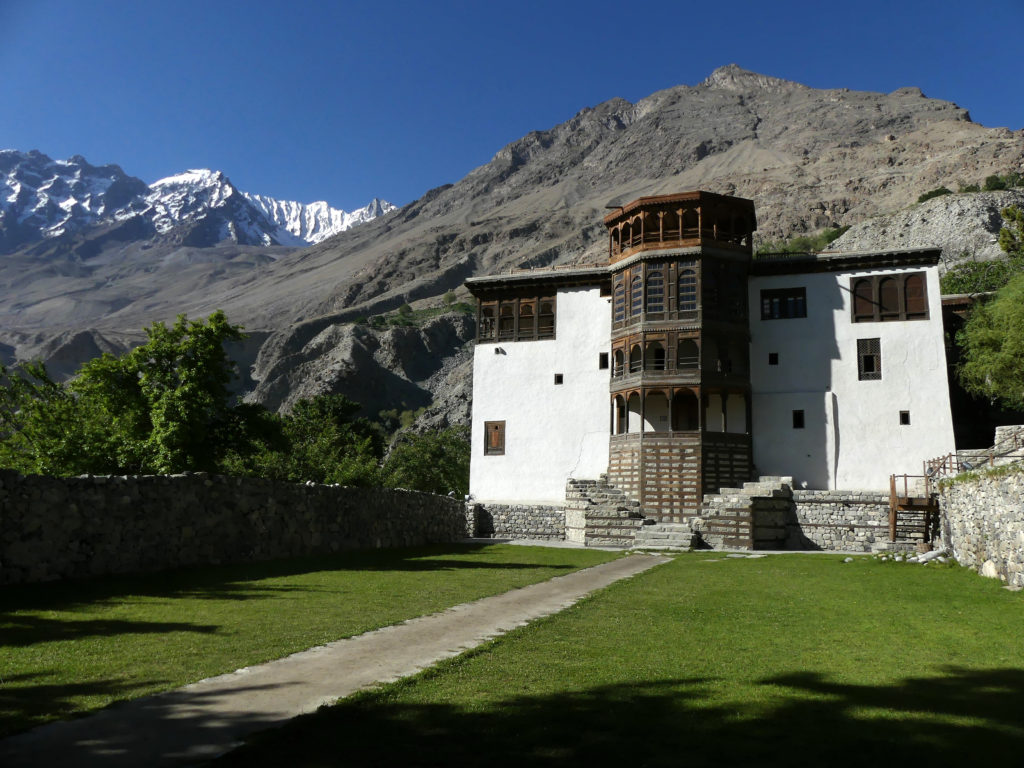 Khaplu Palace (Serena Hotel restored)
Khaplu Palace (Serena Hotel restored)
Our next stop was Shigar Fort, which is another small town in Gilgit-Baltistan, with another restored Palace, run by the Serena Hotels chain. The way to get there from Khaplu was to drive back west most of the way to Skardu, and then turn North for about 40 mins.
As we left the Khaplu Fort Serena hotel to go to Shigar, another armed (sub-machine gun) policeman was patiently waiting to escort us back to the Khaplu district border; and climbed in the back. On the way, we asked Abbas about which fruit was growing on a particular tree we spotted; he did not know. The policeman in the back chimed up and gave us the scientific name for this tree. Curious, we talked some more with the policeman, named Ali. He apparently was well educated and had a degree in Political Science. What was he doing as a regular policeman? His answer was this was his “kismet” (luck). He was happily married with 2 kids and lived in Khaplu. Amazing.
 Mosque on way from Khaplu to Shigar
Mosque on way from Khaplu to Shigar
 Beautiful scenery and villages
Beautiful scenery and villages
 With Ali, our well educated, armed police escort; at the Khaplu district border); where we dropped him off at the police checkpoint (in the back left). Note the barren landscape.
With Ali, our well educated, armed police escort; at the Khaplu district border); where we dropped him off at the police checkpoint (in the back left). Note the barren landscape.
We dropped policeman Ali off at the Khaplu district border, and drove back most of the way to Skardu; just before Skardu, we turned right, crossed the Indus river and headed north to Shigar. The area on this side of the Indus was a desert; with white sands. Again, beautiful landscape all around. The road started climbing uphill and within less than an hour, we arrived in Shigar Valley.
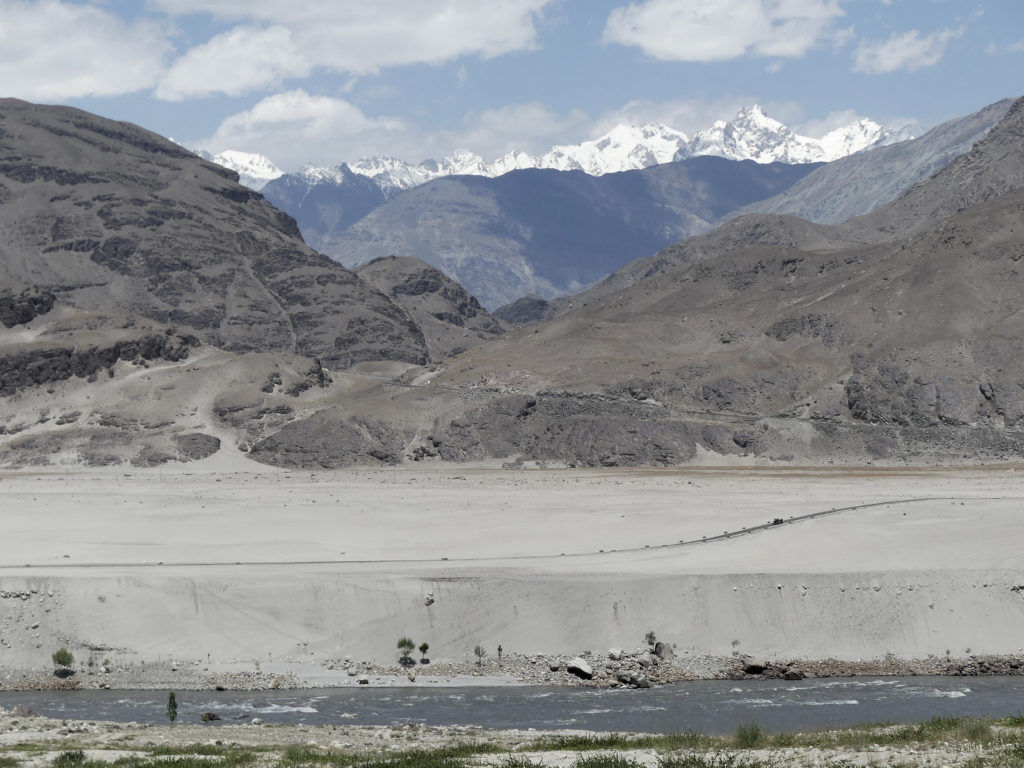 Desert and road snaking its was to Shigar Fort
Desert and road snaking its was to Shigar Fort
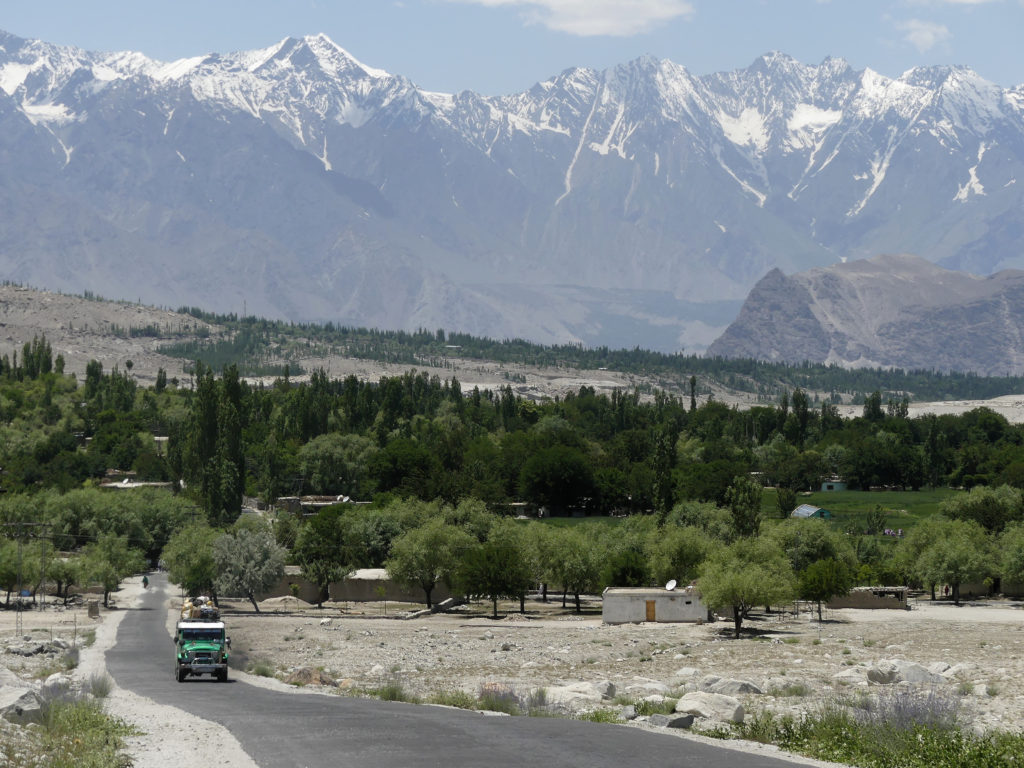 Beautiful scenery on the way to Shigar Fort
Beautiful scenery on the way to Shigar Fort
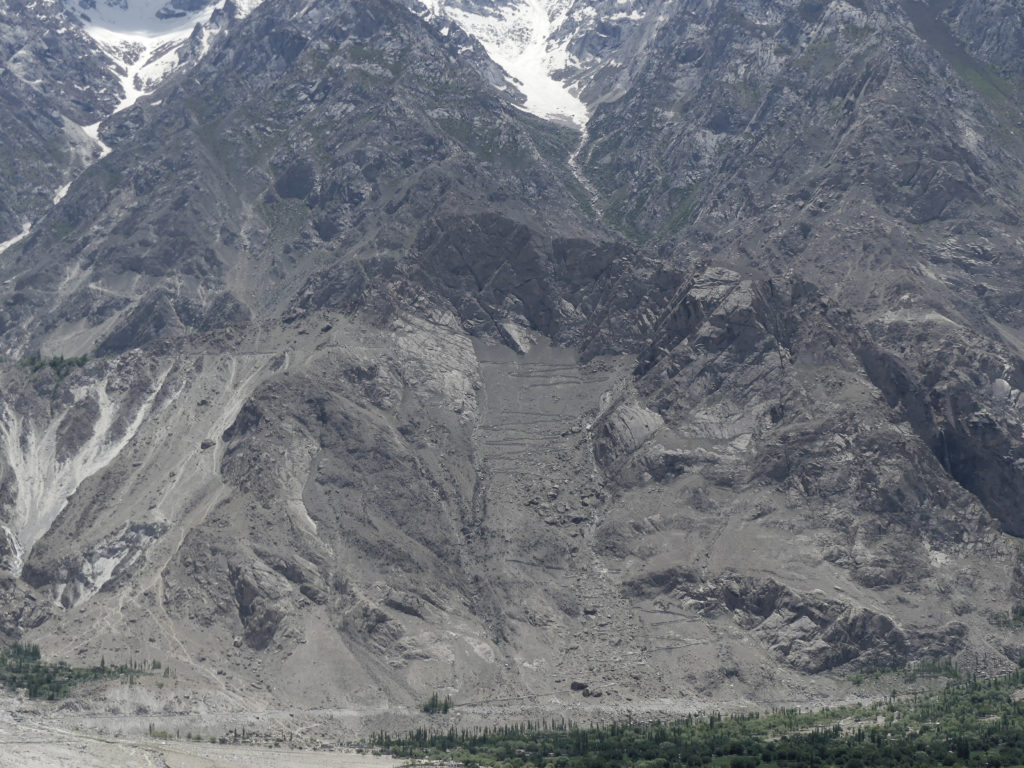 Zig-zag road cut into mountainside
Zig-zag road cut into mountainside
Shigar is another small village (8200ft altitude), which is the starting point for trekking and making the way to the basecamp for K2 (2nd highest mountain in world; in the Karakorum range) via Askole (further up the valley). Shigar valley is also where a lot of gemstones are mined from the Karakoram mountains.
 Shigar valley and Shigar village (green vegetation)
Shigar valley and Shigar village (green vegetation)
Here too, the Raja of Shigar had donated his 400-year-old Fort / Palace to the AKF, which restored the palace into a 20 room heritage guesthouse hotel (Serena badged), with the Raja’s grand audience hall serving as a museum of Balti culture and featuring select examples of fine wood-carvings, as well as other heritage objects. As usual, there was a strategically placed fort at the top of a hill next to the Palace, where the actual fort was; now in ruins from lack of use.
Checked into the hotel, this time in the real Palace, and got a 400yr old restored room. Very nice and quaint; see pics. Then went for a walk in the town, where the Nūrbkahshīya sect is the majority, speaking Balti, with Tibetan influences. They had their old wooden mosque, similar to the Chaqchan mosque we visited in Khaplu; and they also had a Khanqah; or a traditional Sufi monastery/gathering place from the old times, which is now a mosque. We ran into some children who were getting extra tuition classes, and they all came out to talk to us. Refreshing talking to innocent children.
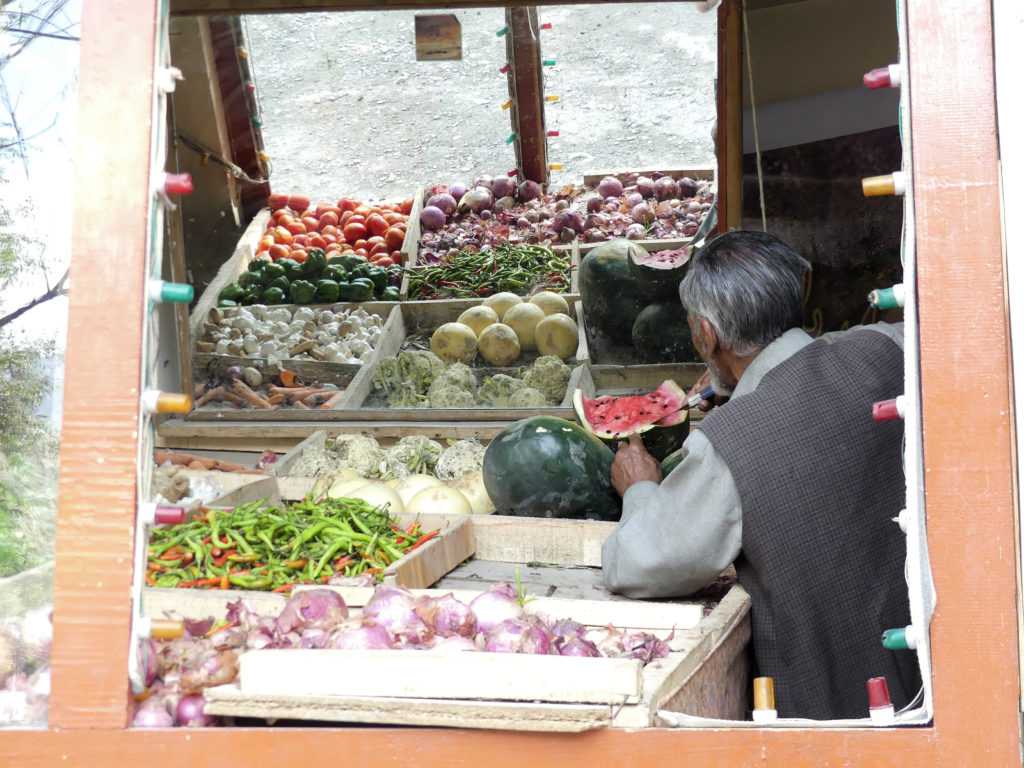 Mandatory picture in Shigar of fruits and vegetables…; Note the clever use of the mirror
Mandatory picture in Shigar of fruits and vegetables…; Note the clever use of the mirror
 Inside the ancient Khankah
Inside the ancient Khankah
 Local Transport; all by trucks. These Landcruisers are over 40yrs old
Local Transport; all by trucks. These Landcruisers are over 40yrs old
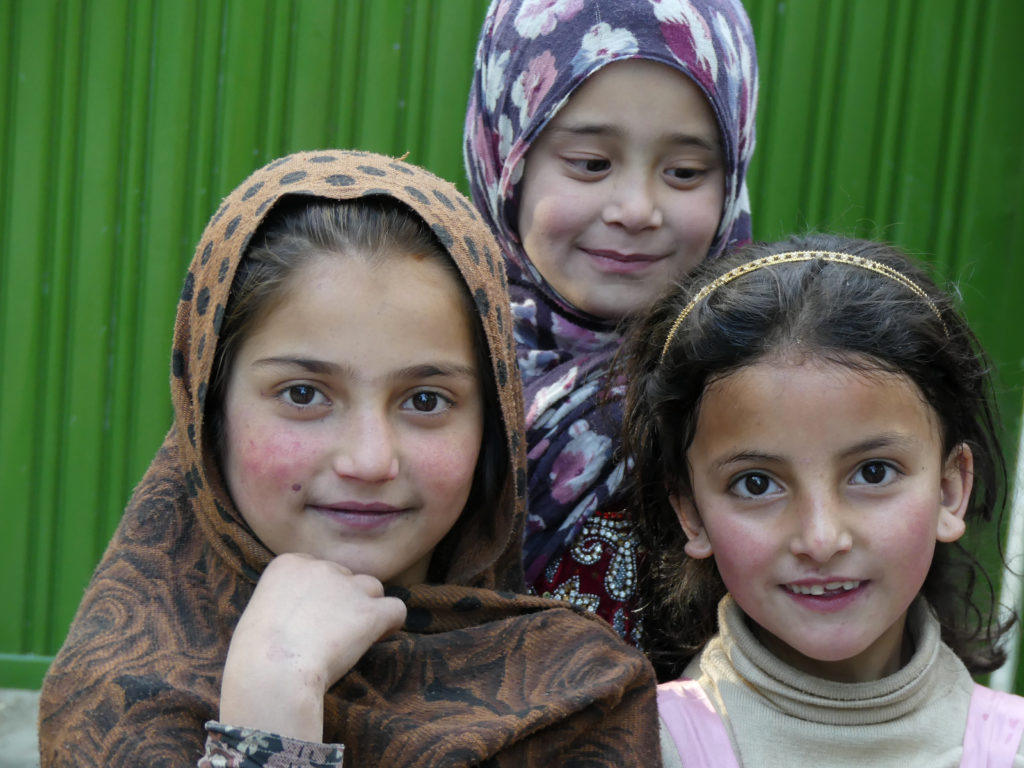 Friendly local schoolgirls with Sakina on right.
Friendly local schoolgirls with Sakina on right.
 Friendly & inquisitive schoolboys
Friendly & inquisitive schoolboys
Back at the hotel, we also got a tour of the old Shigar Palace. The hotel was starting to get busy; and we got into a conversation with a very nice couple; Jawaid Ibrahim Khan and Muntehaa Azad. They were from Azad Kashmir (another province in Northern Pakistan, that actually straddles the Kashmir Line of Control with Pakistan). Gilgit-Baltistan and Azad Kashmir together are the Pakistan portion of Kashmir i.e. Pakistan-administered Kashmir.
We spent an interesting evening with them. They must have been setting some world records as Jawaid was 71, was driving a 65yr old antique car (MG), and was married to the lovely Muntehaa, who was 25. Jawaid became my hero; living the life I can only dream about (old cars, active life, and young wife ☺; so glad my wifeDIlshad, is understanding and forgiving ☺ ☺ ); very nice evening spent in very interesting conversations over lunch and dinner.
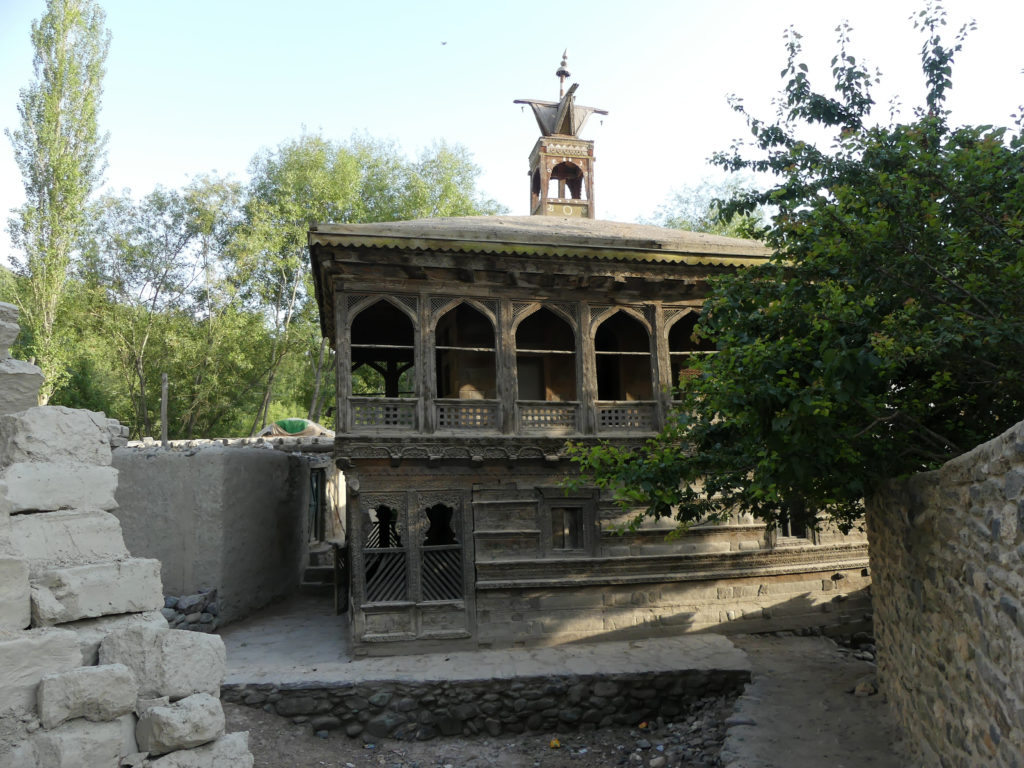 Shigar local old wooden mosque; similar to Chaqchan mosque in Khaplu
Shigar local old wooden mosque; similar to Chaqchan mosque in Khaplu
 Our room in the 400yr old Shigar Palace (wood, stone, mud adobe). Very comfortable and modern amenities
Our room in the 400yr old Shigar Palace (wood, stone, mud adobe). Very comfortable and modern amenities
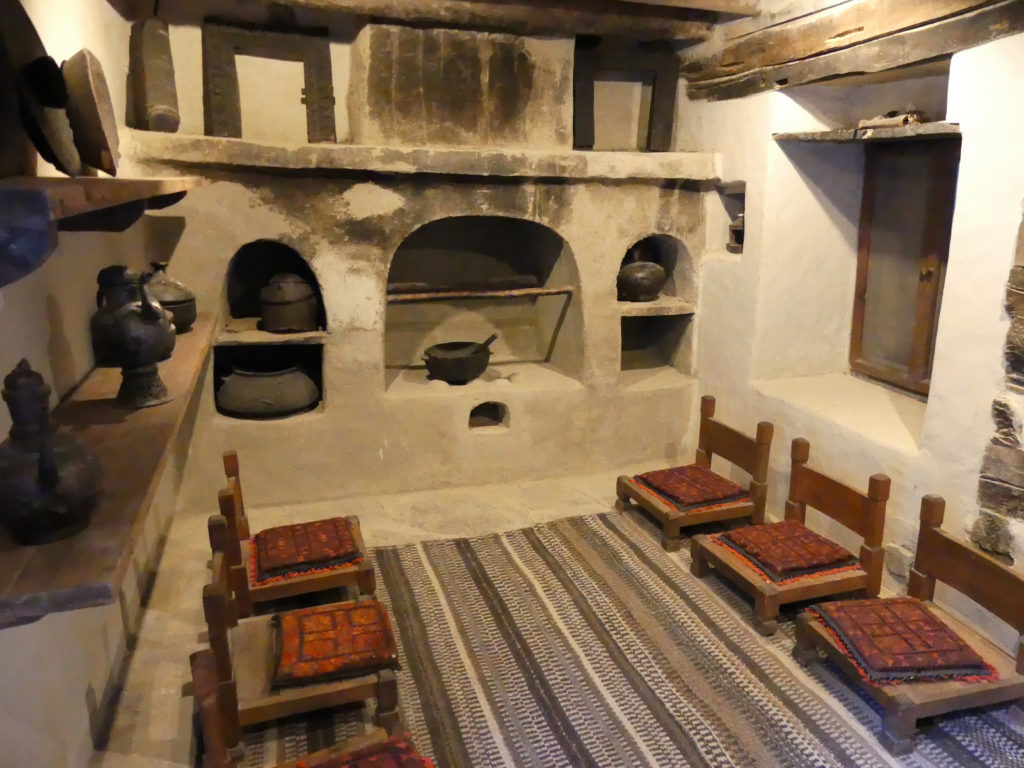 Museum of Raja’s kitchen & dining area
Museum of Raja’s kitchen & dining area
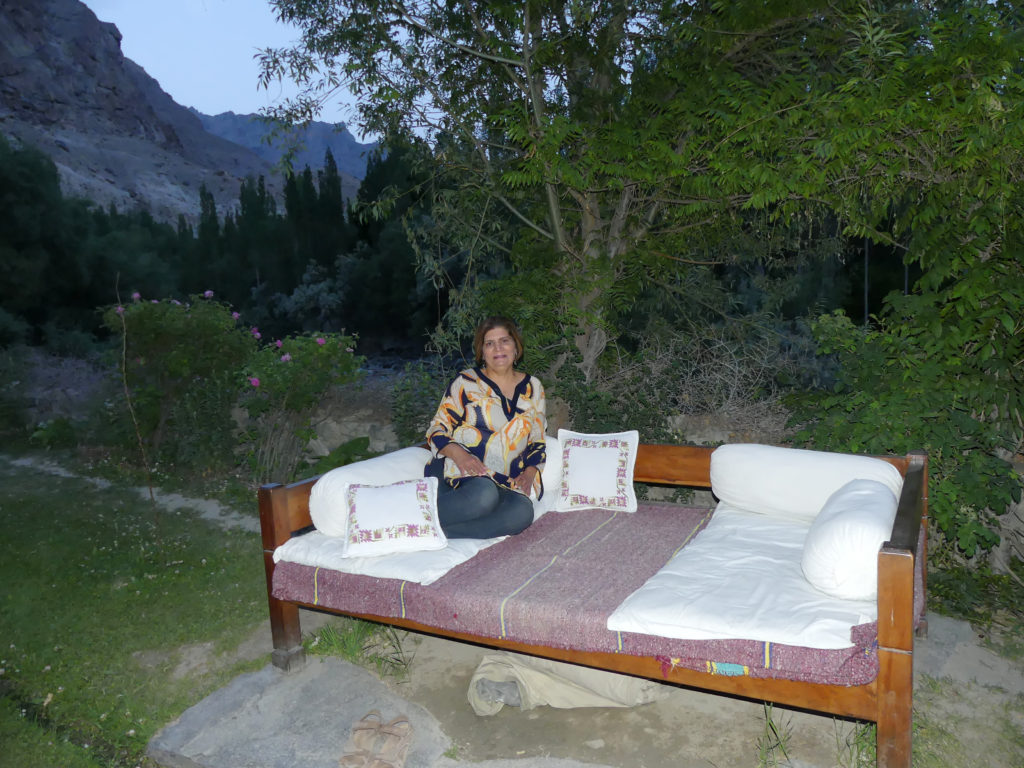 Diwan gardens of the ShigarPalace at dusk
Diwan gardens of the ShigarPalace at dusk
 Dinner with (from left to right) Abdul Karim (GM, Khaplu Serena), Jawaid Ibrahim Khan, self, Abbas, Zafar, Dilshad Karim and Muntehaa Azad, Jawaid’s wife
Dinner with (from left to right) Abdul Karim (GM, Khaplu Serena), Jawaid Ibrahim Khan, self, Abbas, Zafar, Dilshad Karim and Muntehaa Azad, Jawaid’s wife
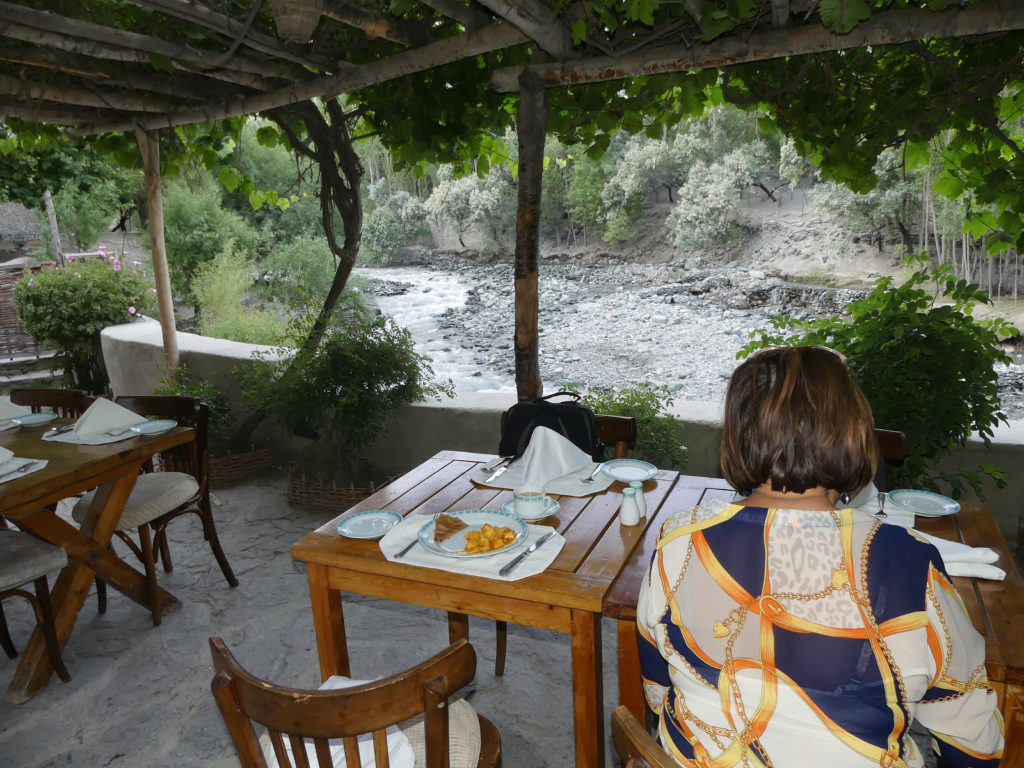 Breakfast at Shigar Fort, Paratha and potato curry.
Breakfast at Shigar Fort, Paratha and potato curry.
Next day, after a great breakfast at the hotel, we checked out of the hotel, as we had a 10AM PIA flight from Skardu to Lahore via Islamabad. Since this is highland mountainous area, prone to rapidly changing weather, PIA is known to cancel flights regularly due to weather conditions. Since we had great weather throughout including today, we were on schedule, and drove the ~50mins to Skardu airport.
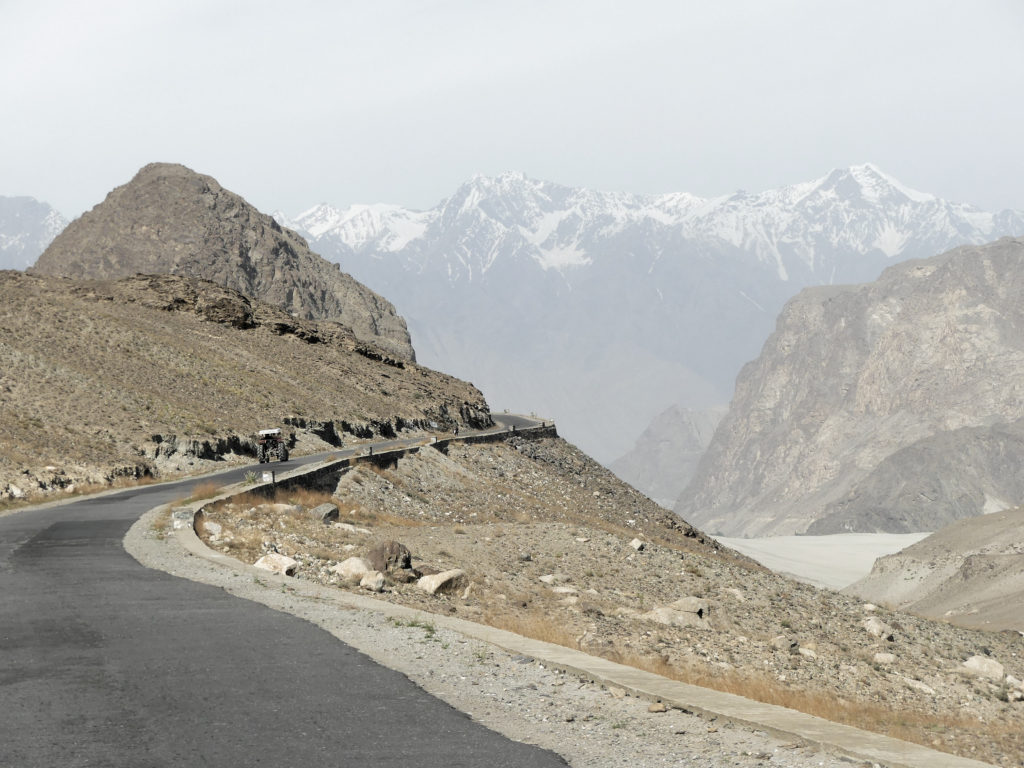 Drive back to Skardu from Shigar
Drive back to Skardu from Shigar
However, upon arrival at Skardu airport, we were informed the flight was cancelled due to a technical/mechanical problem (we found out this is another major reason PIA frequently cancels flights ☹). So tried to rebook (only once daily flights from Skardu to anywhere); but the next day’s flight was fully booked, and we could only get on the day-after’s flight.
So not wanting to stay 2 extra days in this area, we elected to drive back to Gilgit (Abbas and Zafarwere driving back there anyway); where we would try flights again, to drive to Islamabad/Lahore. The drive back from Skardu to Gilgit was the same very adventurous road we had come to Skardu on ☺.
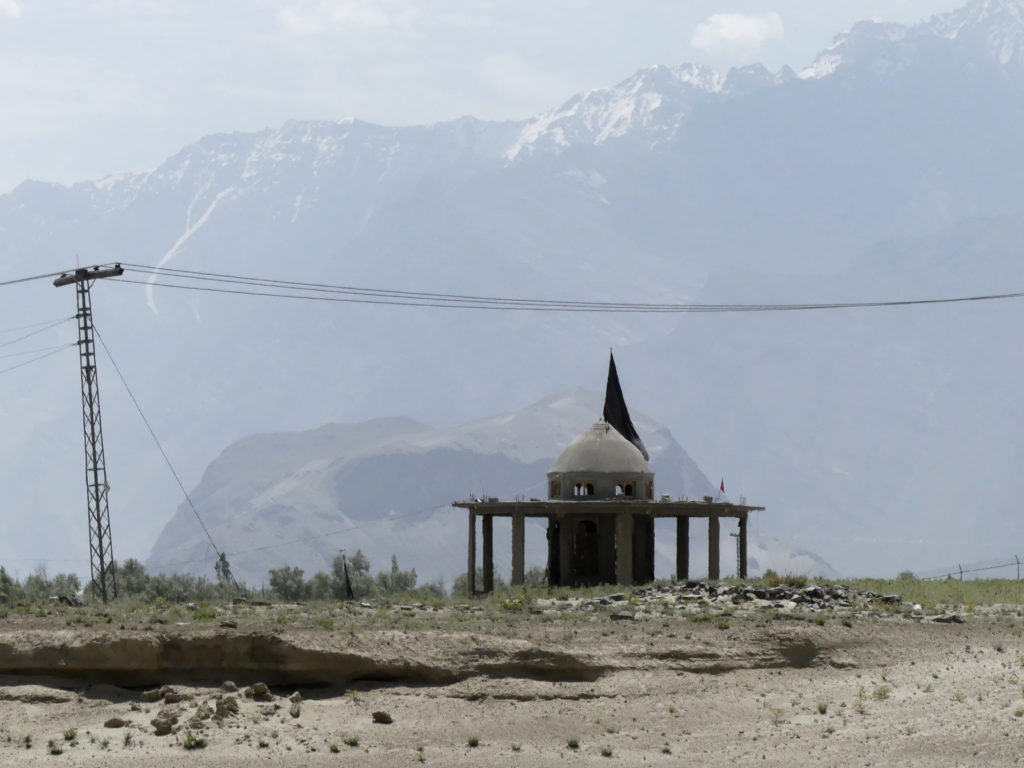 Occasionally, we would see these Ithnashri shrines with black flags
Occasionally, we would see these Ithnashri shrines with black flags
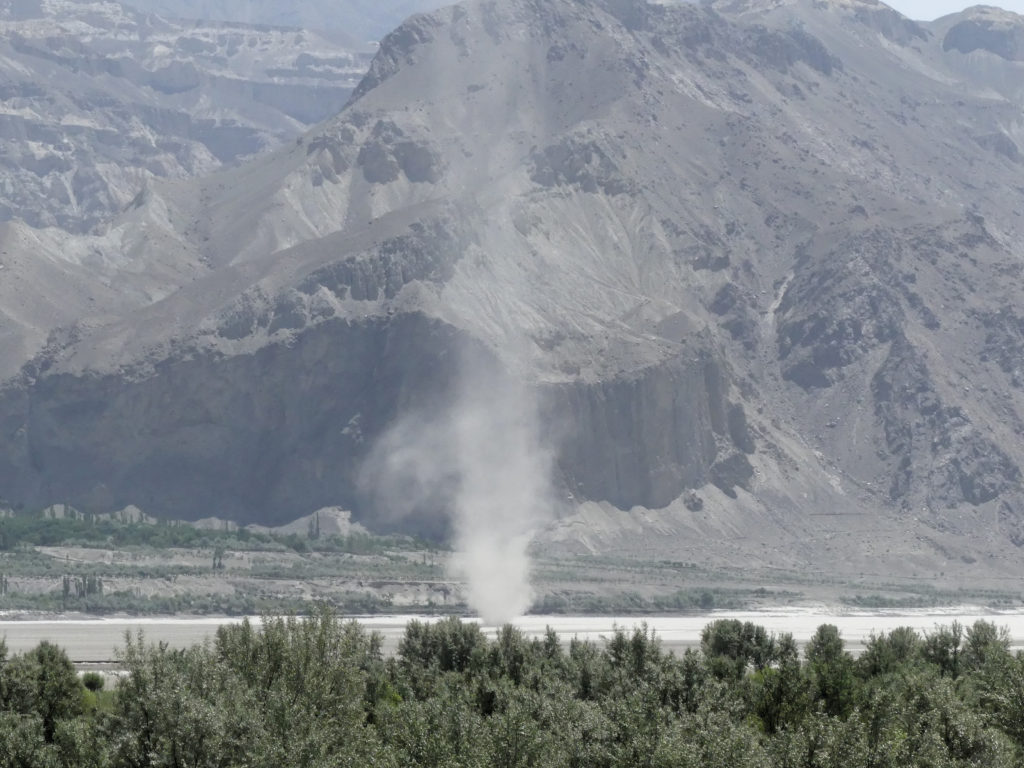 Wind vortex churning up the sand for the banks of the Indus river
Wind vortex churning up the sand for the banks of the Indus river
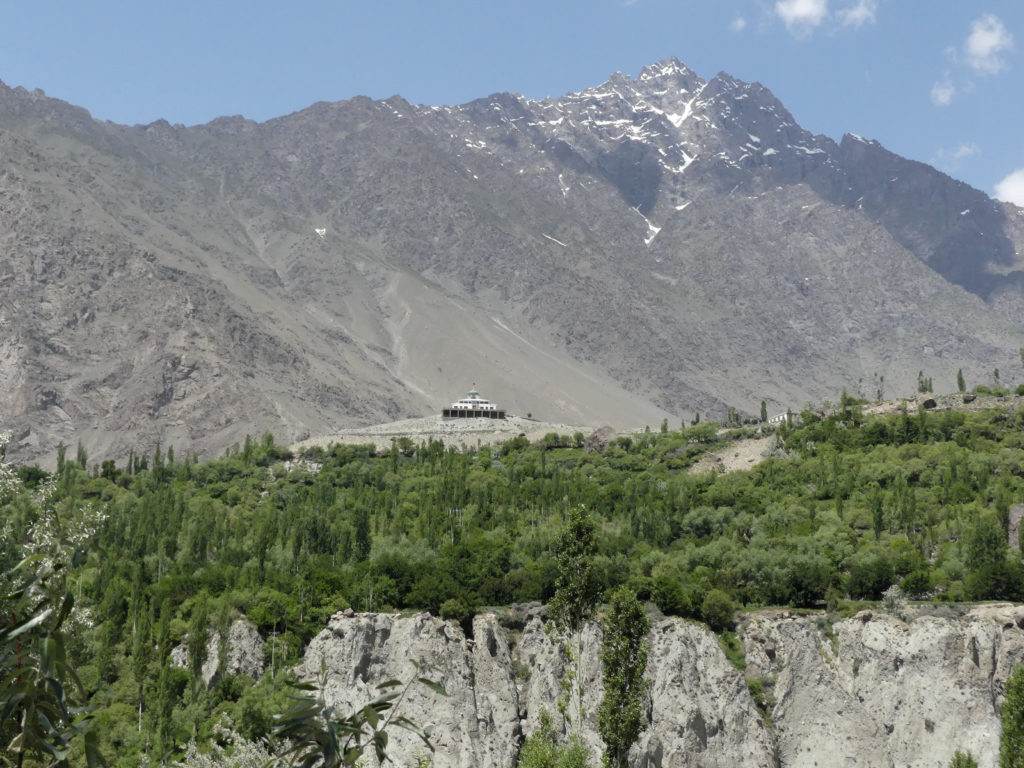 Beautiful strategic mosque location
Beautiful strategic mosque location
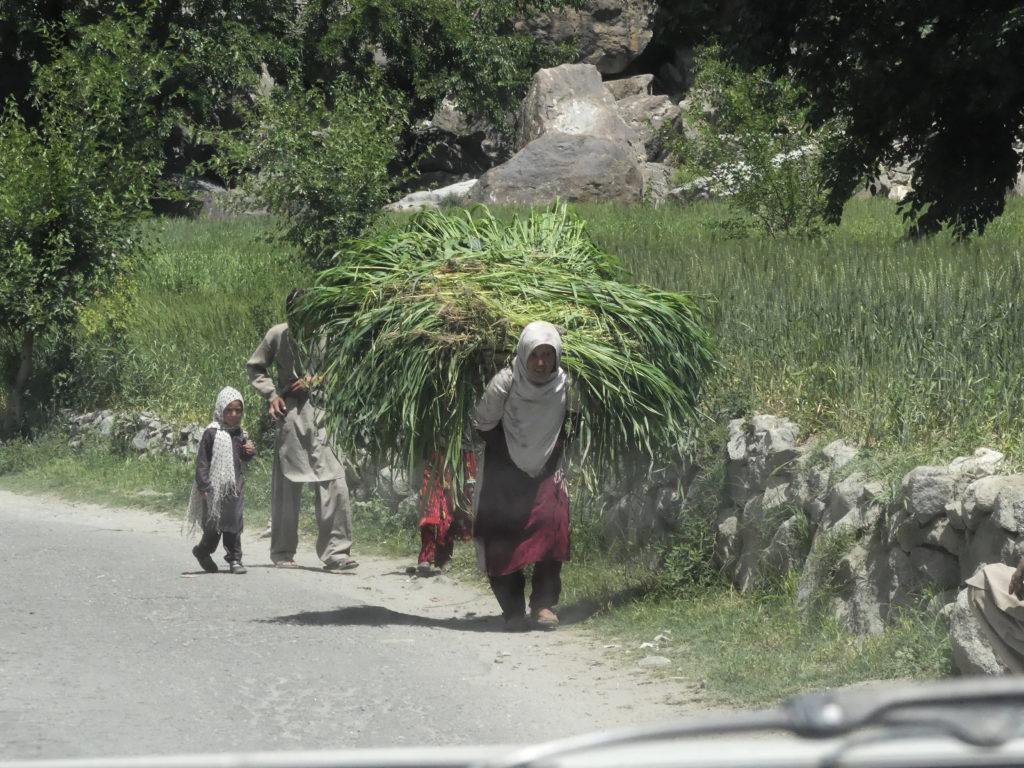 Women work very hard in this area
Women work very hard in this area
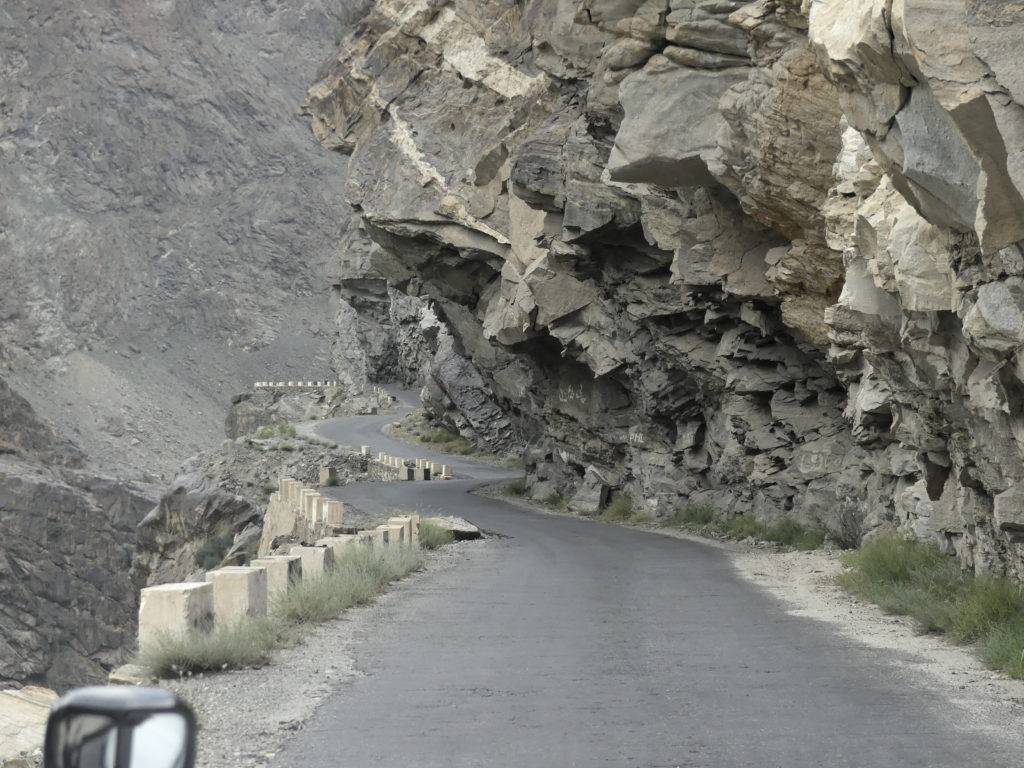 Back to crazy roads from Skardu to Gilgit
Back to crazy roads from Skardu to Gilgit
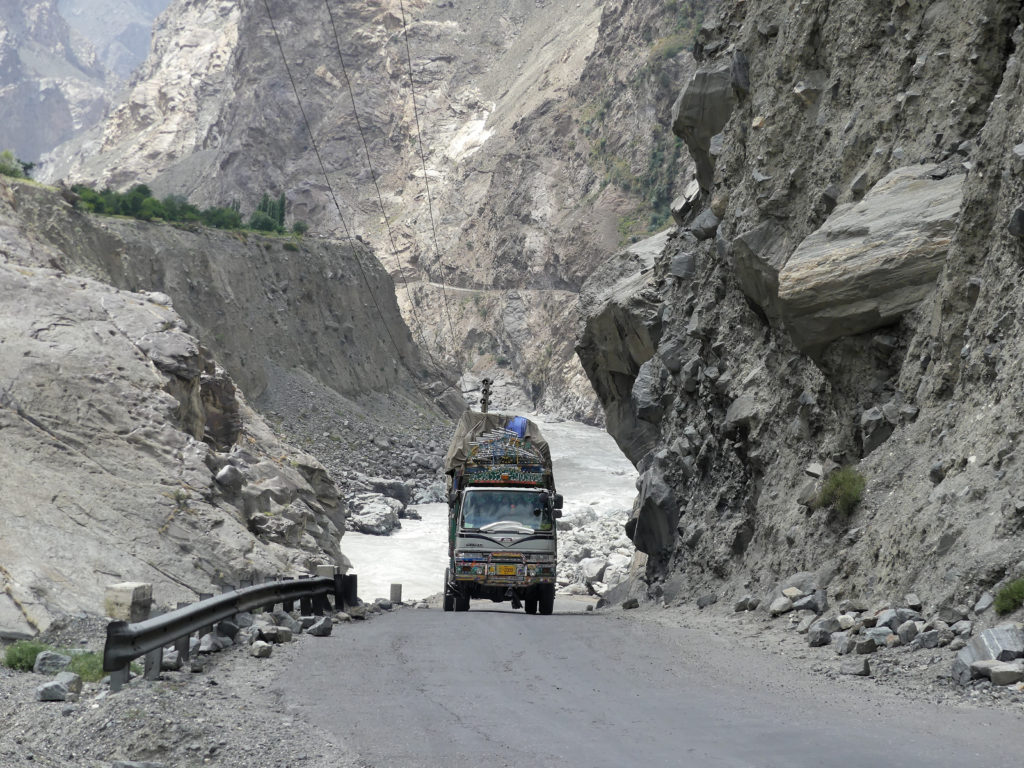 Beautiful rugged landscape with everything trucked in
Beautiful rugged landscape with everything trucked in
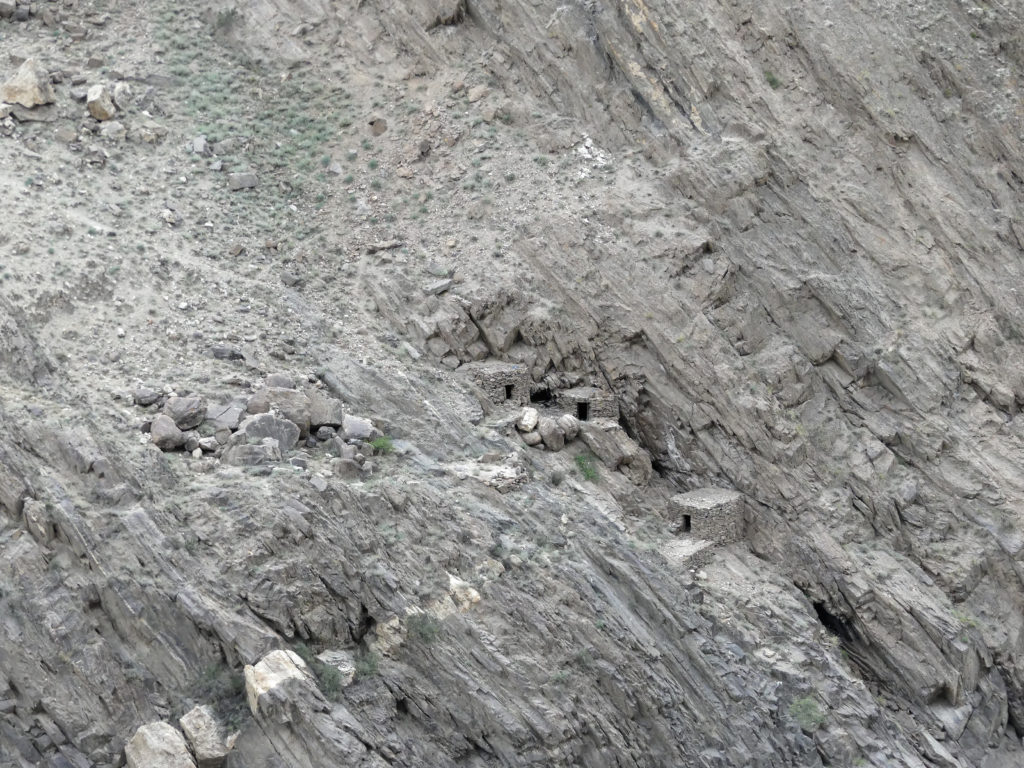 Small houses on mountainside; where miners live and work
Small houses on mountainside; where miners live and work
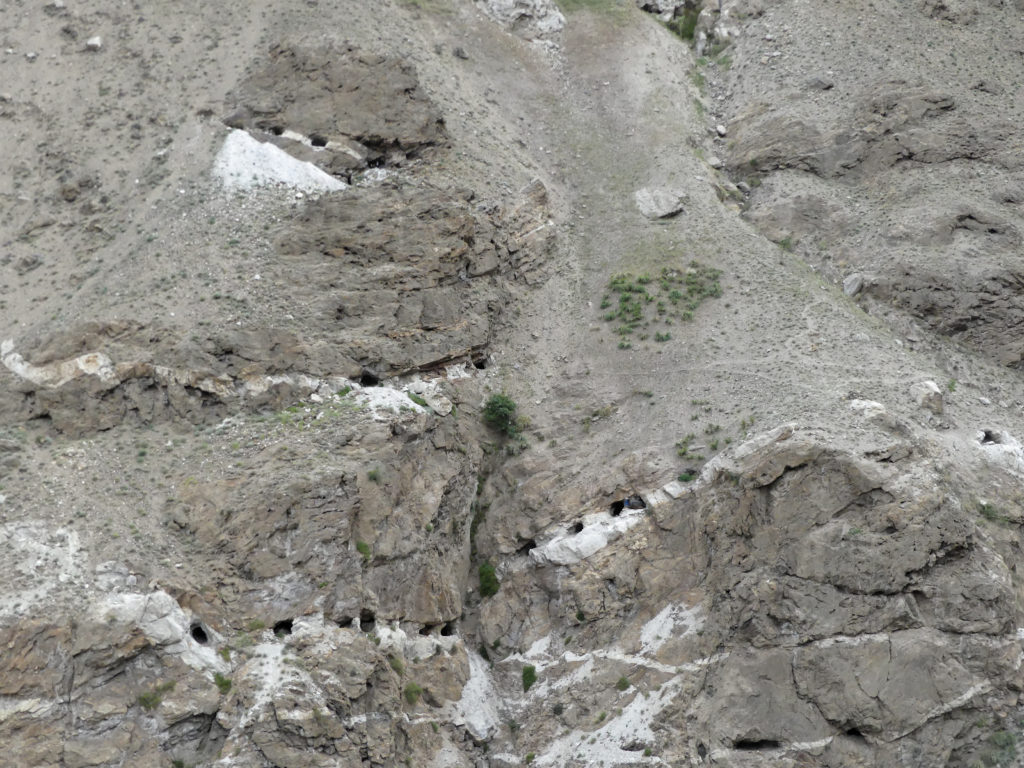 All these holes on the mountainside are small gemstone mines, along the veins
All these holes on the mountainside are small gemstone mines, along the veins
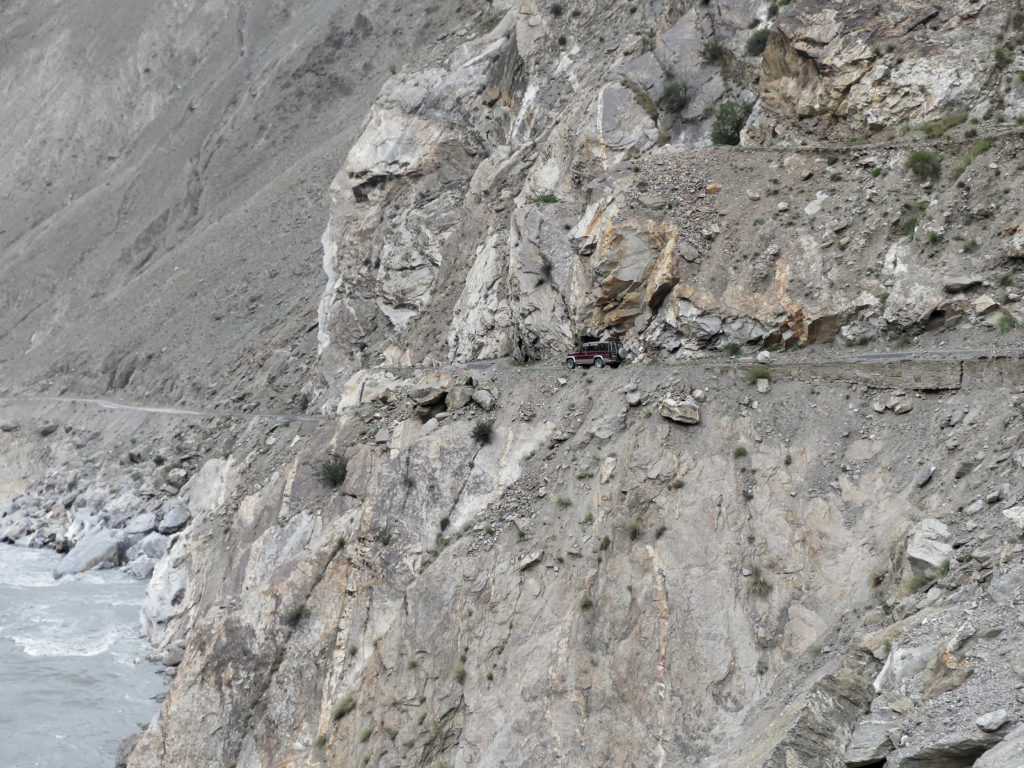 Majestic Nature dwarfs man made objects
Majestic Nature dwarfs man made objects
Once we got near Giglit, we found out that the flights from Giglit to Islamabad or Lahore were fully booked for the next 4 days, so we would have to drive to Islamabad, since we had no desire to stay in Gilgit. Arrangements were made for another car and driver to drive us from Giglit to Islamabad. So we thought we would save some time and simply keep driving to Islamabad, and stay overnight on the way. We asked the new driver/car to meet us on the KKH (Karakoram Highway) where our Skardu road met the KKH, so we could continue driving to Islamabad. We were informed that this was not possible, as foreigners are not allowed to travel on the section of the road in Kohistan province (we had to drive through to get to Islamabad) after 4PM and before 8AM, and it was getting to 5PM now.
Why are foreigners not allowed to travel through Kohistan after 4PM we asked? The answer was because this was Taliban territory.
Interesting. So we spent the night at the Serena in Giglit. Dilshad did not get much sleep as she was worried about Kohistan and what worries it would hold for us.
Next: from Gilgit to Islamabad and the Kohistan Taliban
This entry was posted in Asia, Pakistan, Silk Road Pakistan June 2016
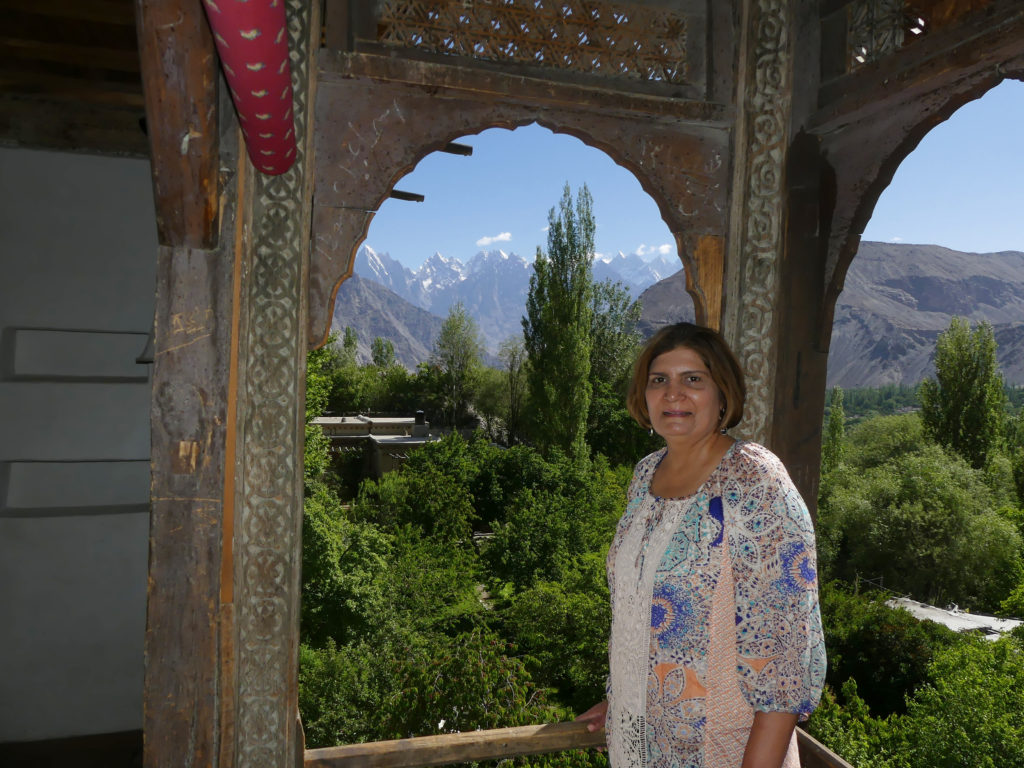
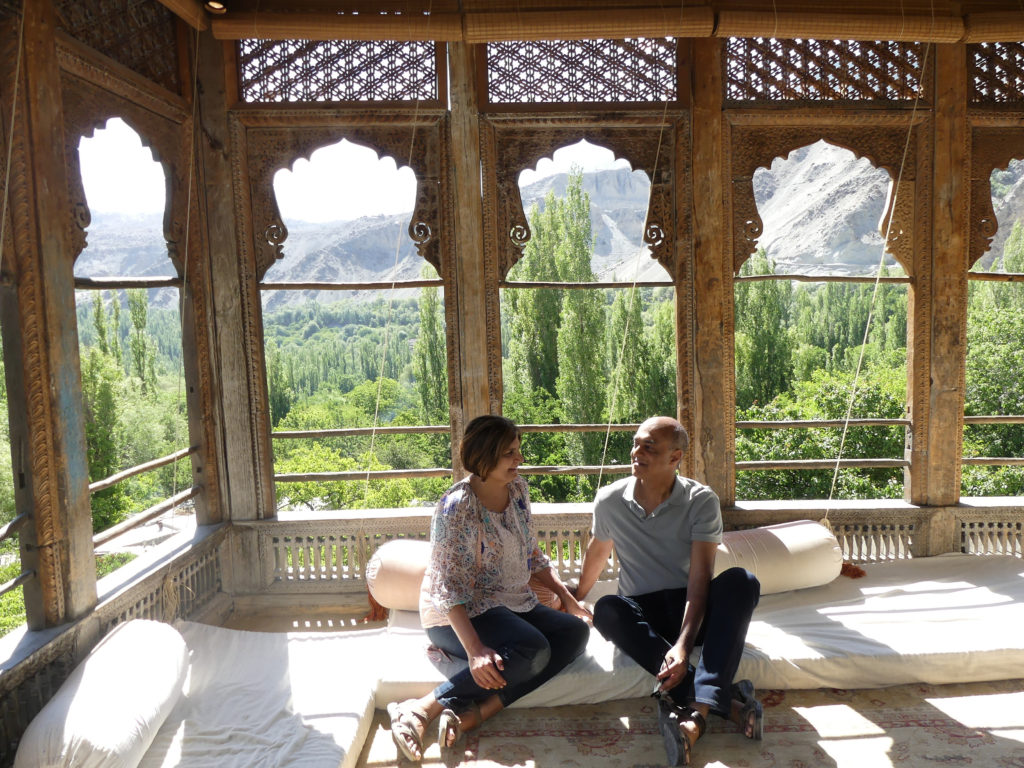


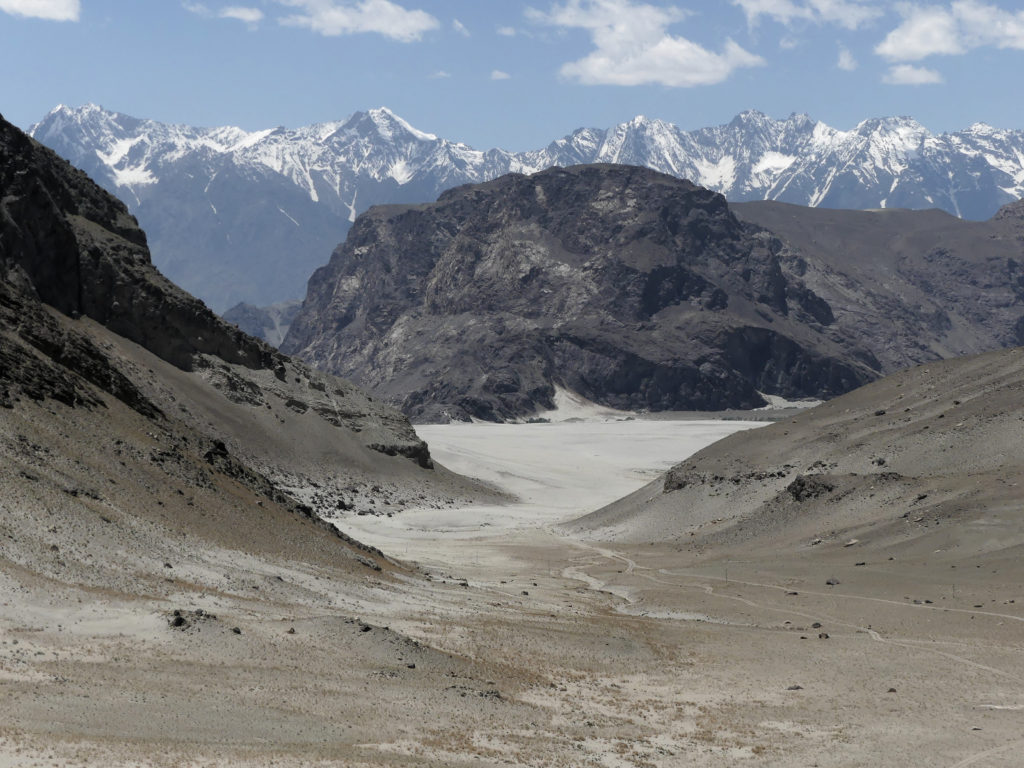
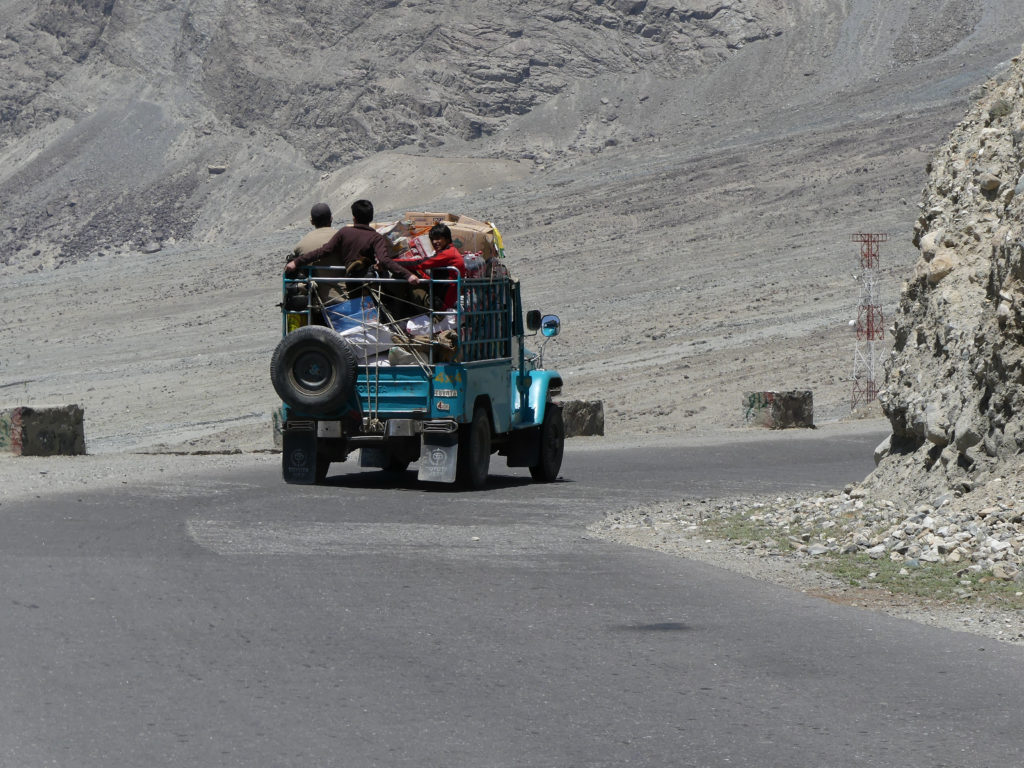


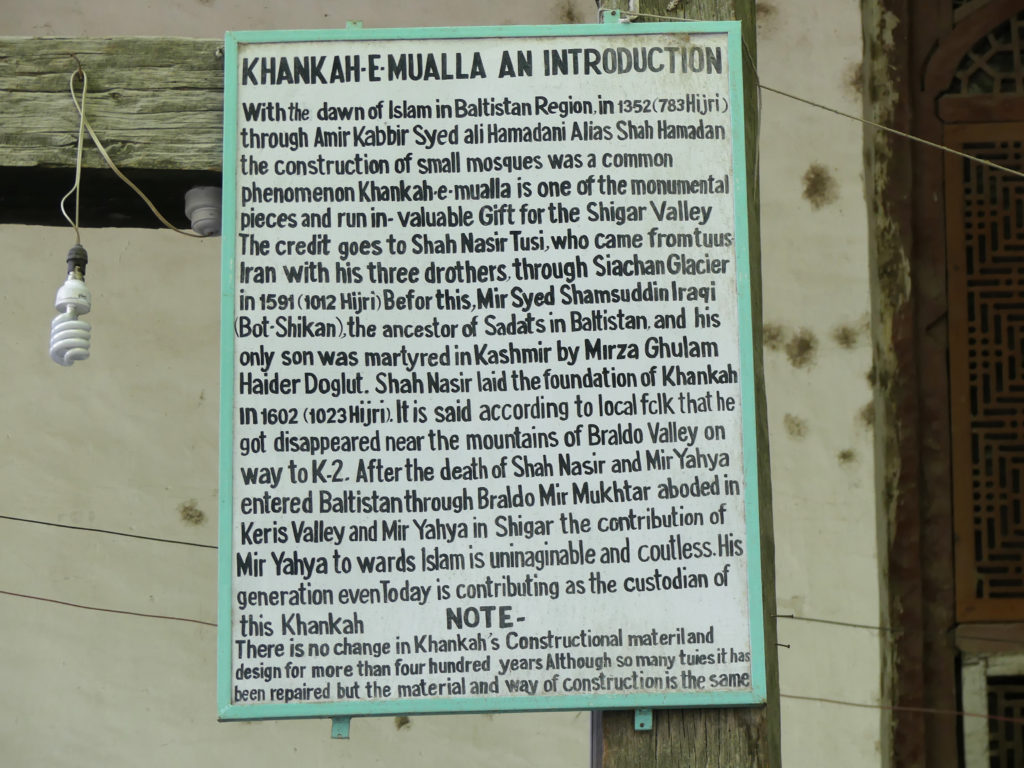

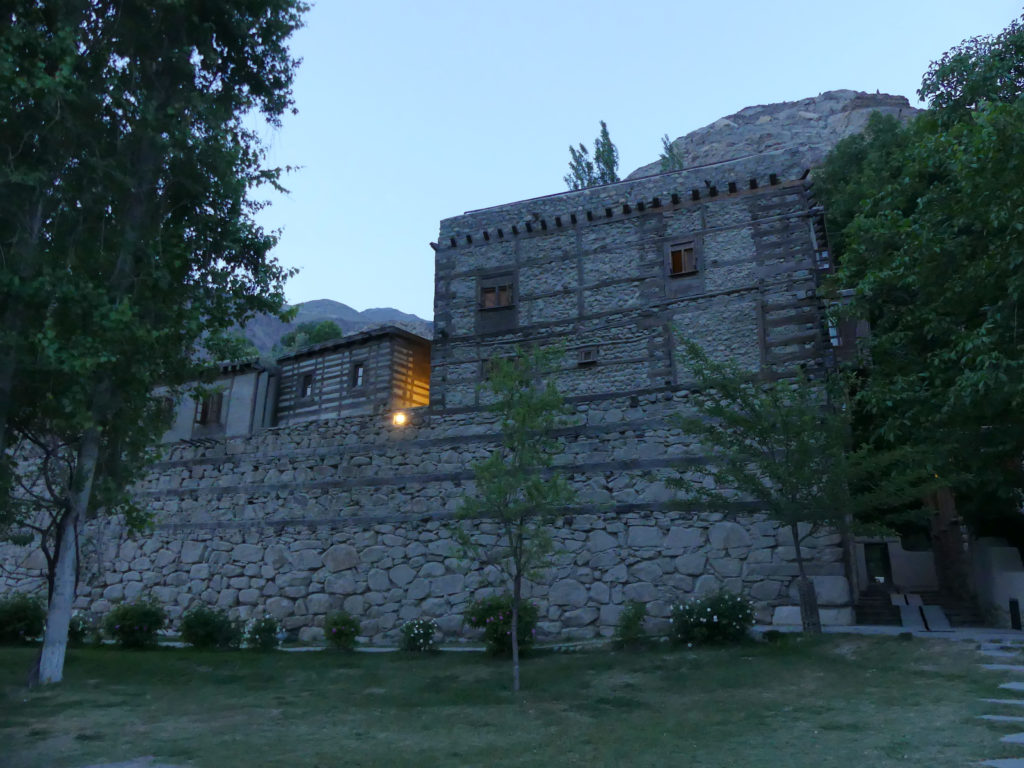
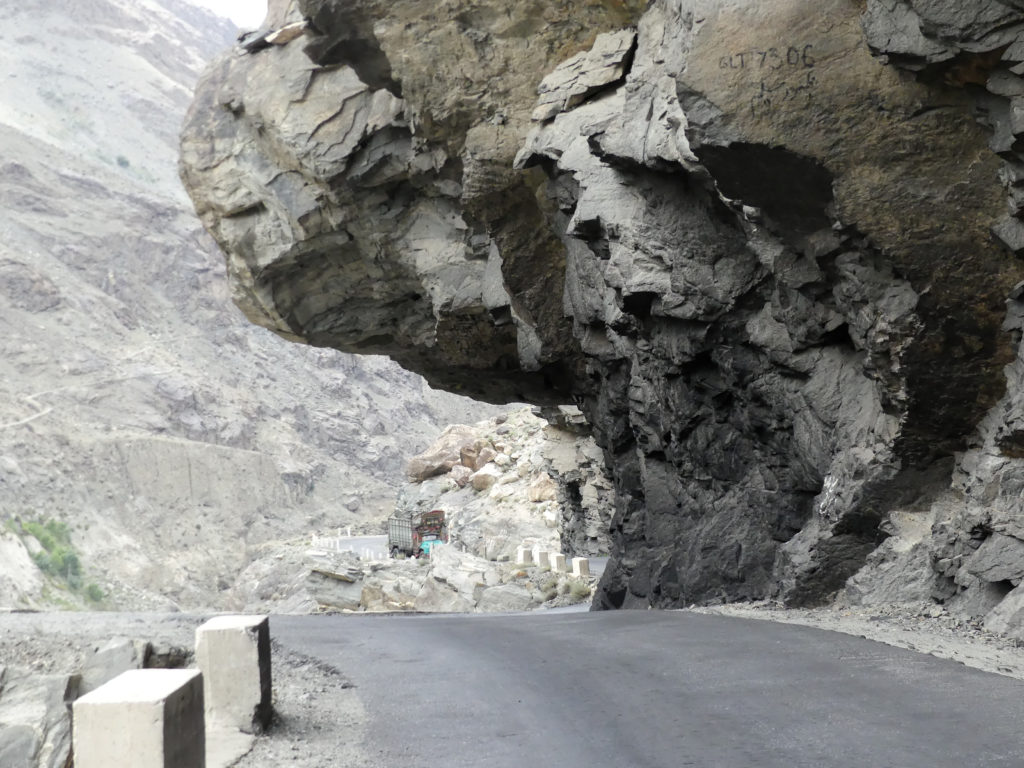


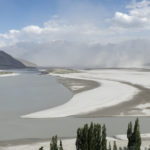

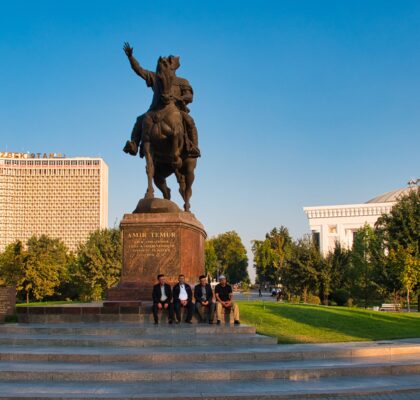

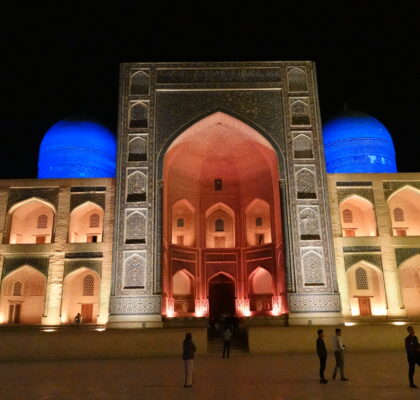
Wow! This could be one of the most helpful blogs We’ve ever arrive across on this subject. Basically Magnificent. I’m also a specialist in this topic therefore I can understand your effort.